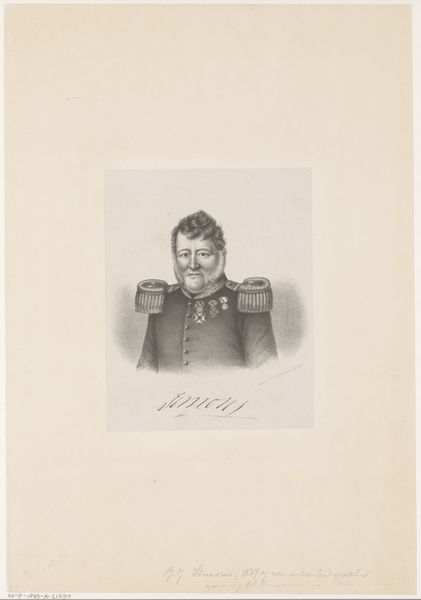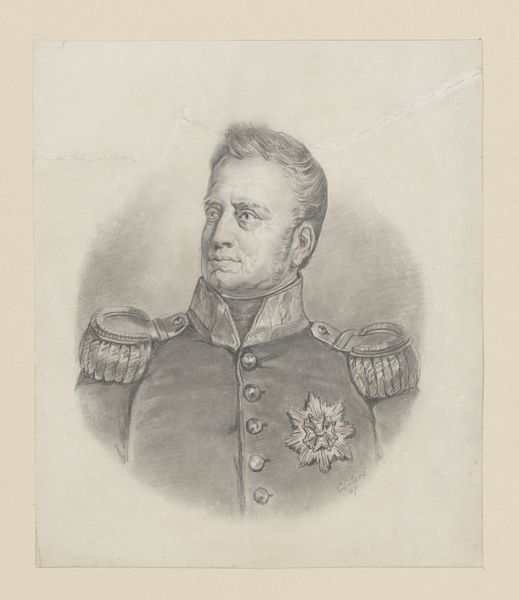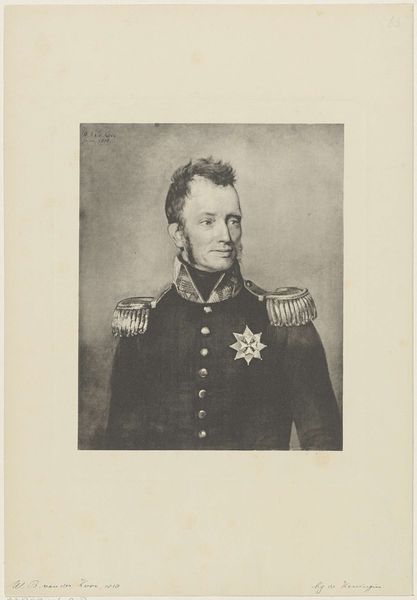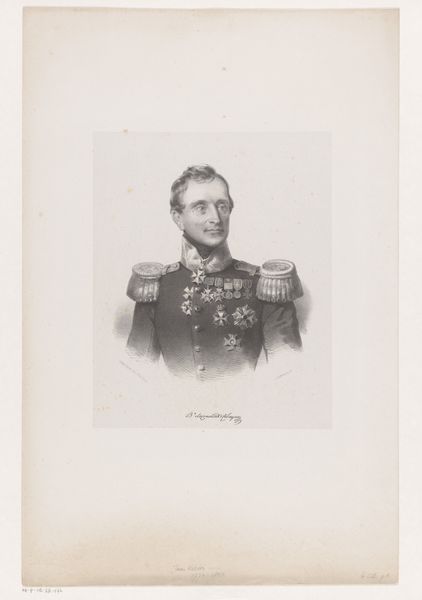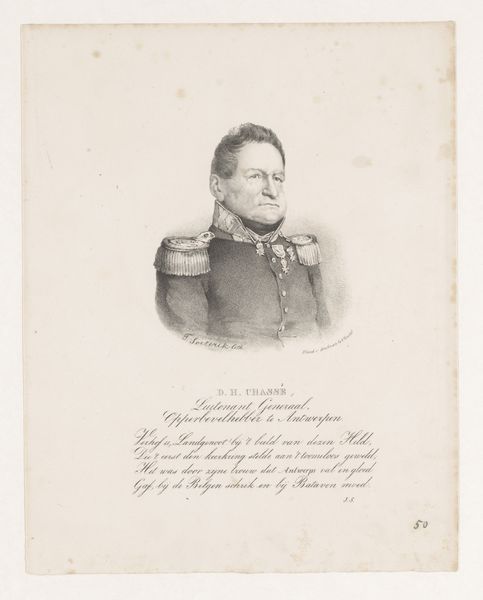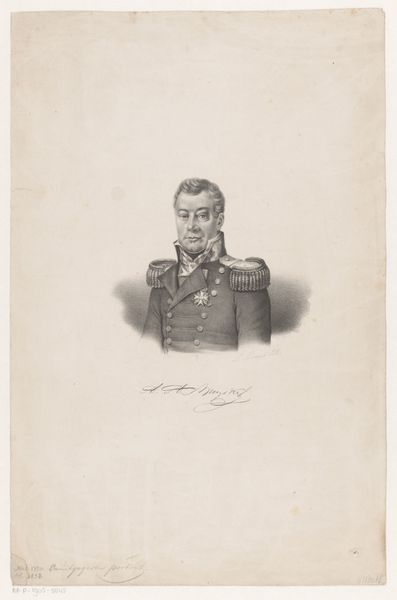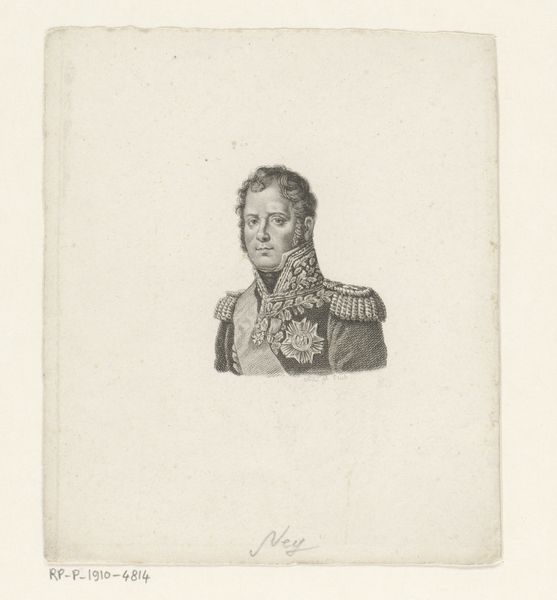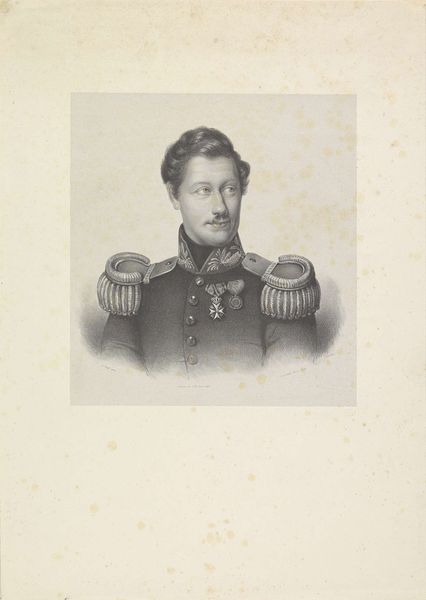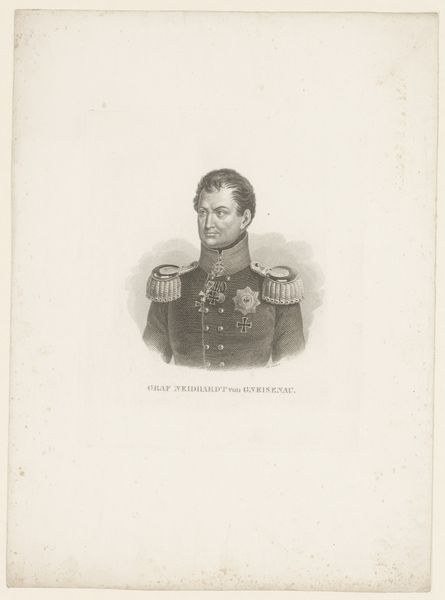
drawing, pencil
#
portrait
#
pencil drawn
#
drawing
#
16_19th-century
#
pencil drawing
#
pencil
#
portrait drawing
#
academic-art
#
realism
Dimensions: height 316 mm, width 298 mm
Copyright: Rijks Museum: Open Domain
In this pencil drawing, made in 1822, Barend Zur Mühlen depicts David Hendrikus Baron Chassé, a General of the Infantry. This image offers a glimpse into the visual culture of military authority in the Netherlands. The portrait creates meaning through symbols of rank and status. The ornate uniform, complete with epaulettes and medals, signifies power and achievement within the military hierarchy. Consider how this portrait reflects the social conditions of its time. The Netherlands, having recently gained independence from French rule, was in a period of nation-building, and military figures like Chassé were important symbols of national pride. The institutional history of the Dutch military, its role in colonial expansion, and its relationship to the monarchy would provide useful context. Further research into the history of military portraiture and the visual codes of power in 19th-century Europe would help us better understand the social and institutional forces that shaped this artwork.
Comments
No comments
Be the first to comment and join the conversation on the ultimate creative platform.
